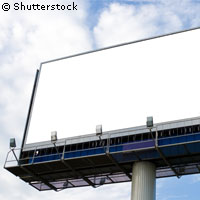EU project offering bright lights for bright future
The EU-supported project OLLA ('Organic LEDs for ICT and lighting applications'), backed with EUR 12 million in financing, may have come to an end, but the consortium has announced an extended collaboration via the OLED100.eu project. The partnership forged between leading European companies will tackle OLED (organic light-emitting diode) lighting technology. The project's aim is to improve the efficiency, lifetime and size of the light-emitting diodes. Coordinated by Patrick Keur, OLED100.eu kicks off on 1 September 2008 and ends in 2011. The project partners seek to secure a power efficiency of 100 lumens per watt; lengthen the lifetime by more than 100 000 hours; expand the area to one metre by one metre, and reduce production costs to or under €100 per square metre. For nearly two decades scientists have sought ways to convert electrical energy into visible light by using means other than incandescent sources. They have also looked to offer the market highly efficient and fully customised light in form, colour and appearance. However, they have focused their energies on display applications only. Sources now say that the potential of OLED technology is great, particularly as OLEDs can provide a myriad of products which offer high efficiencies at high brightness, different appearances, as well as shape and colour combinations. OLED100.eu's contribution to the lighting technology will prove positive, sources say. The research team adds that OLEDs have the potential to become the number one light source choice for various applications, including liquid crystal display (LCD)-backlighting, emergency lighting, signalling and advertising. By 2023, these specific diodes will have succeeded in replacing the currently used lights - incandescent and fluorescent - and OLLA helped kick-start this phenomenon successfully. OLLA recently presented the basic technology for a highly efficient white OLED light source based on the Novaled PIN OLEDTM technology. 'The high efficiency combined with the extrapolated lifetime values prove that OLED is a serious technology for lighting applications, allowing innovative design capabilities and energy savings for future lighting products,' explained OLLA project leader Peter Visser. For his part, Novaled's Dr Martin Vehse said, 'The Novaled PIN technology has the potential to further improve the power efficiency. It's in line with the technology roadmap [which indicates] that in the near future some 100 lm/W OLEDs will be achievable.' The results achieved in OLLA also include the delivery of large indium tin oxide (ITO)-free OLEDs, the first large-area printed OLEDs and a number of information and communication technology (ICT) demonstrators. The researchers say all key players involved in the OLLA and OLED100.eu projects have strengthened their cooperation and fuelled their expertise to get the innovative technology off the ground as quickly as possible, particularly for the international markets.



